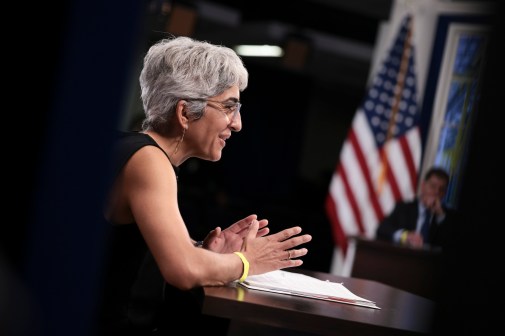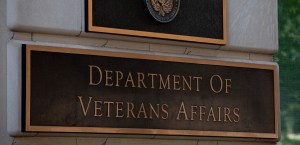 Dr. Michael Valivullah, chief technology officer, U.S. Department of Agriculture National Agriculture Statistics Service (Photo: David Stegon/FedScoop)
Dr. Michael Valivullah, chief technology officer, U.S. Department of Agriculture National Agriculture Statistics Service (Photo: David Stegon/FedScoop)Dr. Michael Valivullah, the chief technology officer at the U.S. Department of Agriculture’s National Agriculture Statistics Service, is looking to minimize the number of passwords agency employees need to remember.
Valivullah, in an interview with FedScoop, said he is in the process of looking for an enterprise-wide identification, authentication and role-based authorization system that will remove the agency’s need for employees to have separate passwords when accessing different applications and databases on different operating platforms.
“We have tons of username and password combinations, thanks to several legacy applications and databases with their own embedded security,” Valivullah said. “We want a simple system that is secure, reliable, flexible and robust. We want a solution that enables the IT department to delegate the authorization function to different business units that own the business data and applications. This empowers the business units to control access to their data and applications based on business need.”
Valivullah said that when it comes to user authorization that can be delegated to business units to increase efficiency, agility of access and reduce business risk. For example, a human resources manager can manage required HR employee access to appropriate databases and applications. But the same employees would then be denied from areas they don’t need access to.
“So someone in the finance department would not need access to the same files, applications and databases as someone in human resources department and vice versa,” Valivullah said. “It would be based on employees’ roles and responsibilities and on a ‘need to know’ basis.”
Outside of that project, Valivullah is also updating the agency’s Section 508 implementation plan.
Valivullah brought in an expert from the U.S. Department of Veterans Affairs to share how VA deals with Section 508, a government requirement that all technology be available to everyone, regardless of physical limitations.
In May 2012, the White House released the digital government strategy and included electronic information technology accessibility among the strategic outcomes.
Millions of Americans of all ages identify as having disabilities. Approximately eight million have vision difficulty and another eight million have hearing difficulty. The number of individuals with disabilities is expected to increase as the population ages, Valivullah said.
Section 508 of the Rehabilitation Act requires Federal agencies to ensure that all EIT developed, procured, maintained, or used in the federal environment provides equal access for federal employees and members of the public.
At the request of an agency administrator, Valivullah has created a Section 508 compliance plan for the agency. It is currently going through the agency’s vetting process. “We can grow that program, not because we have to, but because it’s the right thing to do,” Valivullah said.
Valivullah said he’s also on the hunt for big data and high-performance computing solutions. With Agricultural Research Labs all over the country, USDA Agricultural Research Service generates tons of data, but needs a solution to help manage it. He is collaborating with ARS to help identify an effective big data management solution.
Valivullah, along with a team from NASS and the U.S. Agency for International Development went to Bangladesh to assess the statistical systems, business processes, standards, best practices and management for collection, analysis, estimation and dissemination of agricultural data.
“We discussed a lot about business processes, methodology, architecture, opportunities and challenges – things like that,” Valivullah said. “There’s a lot of opportunity ahead of us to work together.”






